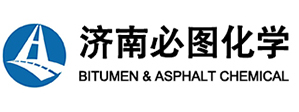- mike@bitumenchem.com
- +86 15066607710
- Tongfa Avenue, Changqing District,Jinan
Location: Home > News & Trends > Industry News
Segregation test is a commonly used method to evaluate the storage stability of SBS modified bitumen. Its advantages include simple method, convenient operation, low cost, etc. However, segregation test also has some disadvantages, such as limited applicability, long time consumption, and inability to simulate actual storage conditions.
First, one of the advantages of segregation test is that the method is simple and easy to operate. Segregation test only needs to place the modified bitumen sample in a test tube and evaluate its storage stability by observing the stratification of the sample. This method does not require expensive instruments and equipment, is simple to operate, and does not require complicated experimental steps, so it is widely used.
Second, the cost of segregation test is low. Compared with other complex experimental methods, the cost of equipment and reagents required for segregation test is low. This makes segregation test an economical and practical evaluation method, especially suitable for some laboratories or enterprises with limited resources.
However, segregation test also has some disadvantages. First, segregation test is only applicable to SBS and SBR modified bitumen, and is not applicable to other types of modified bitumen such as PE and EVA modified bitumen. This limits the scope of application of the segregation test, and it is not possible to evaluate all types of modified bitumen. Secondly, the segregation test is time-consuming. In the segregation test, it takes at least 55 hours to get the result of a sample. This makes the segregation test unusable as a compatibility detection method in the production process, and it is impossible to monitor and adjust production in time. In engineering practice, a faster method is needed to evaluate the storage stability of modified bitumen.
- Is the preparation method of SBS modified bitumen
- Can we predict the performance and stability of mo
- Advantages and Disadvantages of Segregation Test t
- BAC:Lower cost and higher reliability
- In the production process of rubber bitumen, the c
- What are the conditions that affect the epoxidatio
- What are the performance characteristics of modifi
- Why is excessive coupling agent the main cause of







